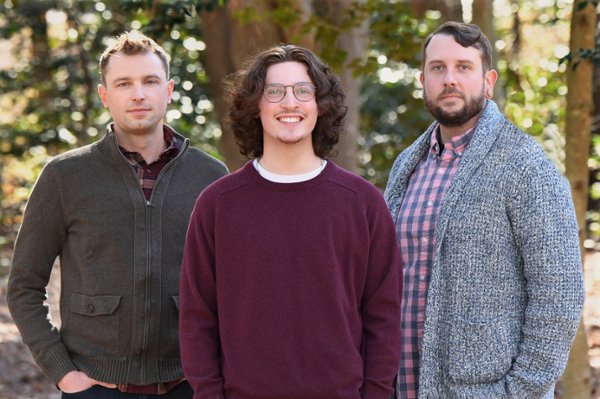They call it the Byrd Bot. Listen to it tweet.
They call it the Byrd Bot. Listen to it tweet.

It’s called it the “Byrd Bot,” and it speaks for all the birds lost in North America over just the past 50 years.
According to a study published in the journal Science and used by Rowan University researchers, since 1970 roughly one third of the continent’s birds died off – some three billion – due to human encroachment and climate change, and that loss is representative of the growing biodiversity crisis in North America and beyond.
Incorporating the data into their own work, two faculty members and two students from Rowan’s School of Earth & Environment and the Ric Edelman College of Communication & Creative Arts uploaded it to a custom web app and used artificial bird soundscapes to sonically illustrate the unfolding crisis.
Dr. Miles Coleman, assistant professor of communication studies in the Edelman CCCA, and Dr. Charles Schutte, assistant professor of environmental science in the SEE, collaborating with undergraduates Brandon Simon and Matthew Pierce (who have since graduated), uploaded simulated bird sounds from 1970 and 2017, then projected further losses to the year 2065, to demonstrate the crisis.
The accelerating loss of sound, and what it represents, is at once thunderous and frightening.
“The goal of the project is to compress the slow change of the Anthropocene into an instant and create an experience that can motivate people to grasp the idea not just in their mind, but also in their body,” the researchers wrote in a paper that Coleman and Simon presented at the National Communication Association Conference last November.
Scientists view the current geological age as the Anthropocene, a time frame that began with the Industrial Revolution, in which human activity has been the greatest force to negatively influence the environment, leading to the climate and biodiversity crises.
“The Science article mostly attempts to quantify the loss of bird life, and historically one of the big reasons for loss is destruction of habitat,” Schutte said. “Looking forward, we believe there will be greater loss due to climate change.”
But human activity is affecting far more than birds, who are often considered more sensitive to environmental changes than other animals.
“We’re changing habitat everywhere and it’s displacing animals at a fundamental level,” Schutte said.
The team hopes that by rolling out the Byrd Bot, first as a web app and then possibly in a mobile version, they can help further raise awareness about the climate and biodiversity crises.
“According to polling data, most people are concerned about climate change, but willingness to adjust behavior is expressed more by those on the ideological left than on the right. We need to explore new ways to communicate the problems of the Anthropocene beyond problems like ideological polarization,” Coleman said.
Which is where the Byrd Bot comes in. Coleman said three billion birds lost on just one continent – in just 50 years – is such a big number that it’s difficult to grasp. So, the team set out to answer two questions: What does three billion fewer birds sound like? And what does the absence of those sounds feel like?
“It’s much easier to reach someone when you connect emotionally,” Coleman said. “We thought it was a good idea to sonify, to actually use the voices of birds, to Illustrate that data.”
Simon, who presented the laptop version of Byrd Bot during the Edelman CCCA’s Fall Research Showcase in December, said it created a visceral reaction with viewers, and that was the goal.
“Once people listened to it they were visibly affected,” he said. “The hope is that once they go outside they’ll pay more attention to their environment.”
Help the researchers collect further data by completing a survey.